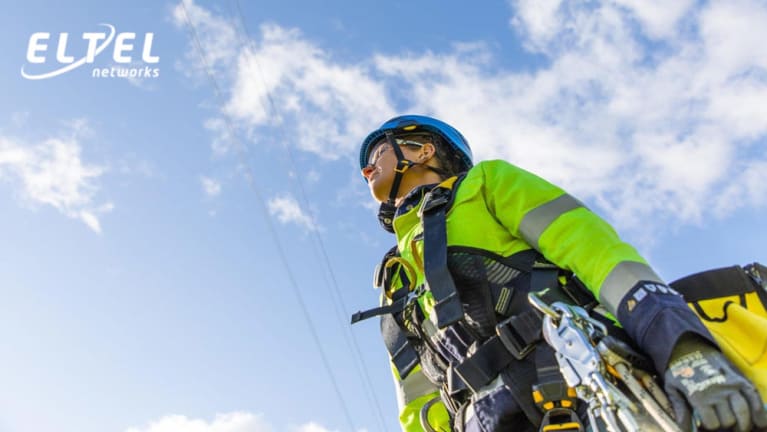
Golden Rules For Safe Work On High-Voltage Lines
Electric power industry pays special attention to safety. Most of the work is classified as particularly hazardous, and strict rules are in place to reduce the risk to the health and lives of field electricians and bystanders who may be in the vicinity of high voltage lines. What does this look like in practice?
The most important issue is to minimize risk, so the main part of the guidelines and rules focus on proper preparation of the work and securing the site. Working on high voltage lines has its own rules. How are the basic issues that allow you to perform your duties effectively and safely regulated?
Working on high voltage lines - risk assessment
This is the first step that determines the work to be done, if any, and the type of protection to be applied. Relevant questions, asked at the beginning, are about the nature of the electricians' work on the job.
- What is the line voltage rating and at what height are the wires?
- What is the nature of the work and its location?
- What is near and under an overhead power line?
- Does lifting equipment require movement and precision or reach?
- Is access needed under high voltage line wires?
- What is the clear width between wires for any equipment needed to perform the work?
- What are the necessary competencies and experiences of the electricians performing the task?
- What are the general conditions at the electrical work site?
The risk assessment is the basis for deciding on the amount and type of protective equipment to be provided for workers during the required works. Safety rules must be applied at all times, regardless of the size of the work to be carried out or its duration. Safety of working people is paramount. If an action cannot be performed safely for the electrician - do not perform it at all.
Standards for safe work of electrical fitters
Much of the work requires the development of an Instruction for Safe Work (IBWR) as an appendix to the Health and Safety Plan (BiOZ). It details the planned work, including scope, method of execution (including sequence of work to be performed), equipment and resources required, and most importantly, the hazards identified and risk control measures required. How are the key principles of safe work in the electricity sector defined there?
- Multi-stage verification - work in the vicinity of power lines is carried out on the basis of a written order (possibly an operating manual). Only in exceptional situations, such as to save health or life, may be performed without instruction.
- Do not work alone - all particularly hazardous work must be carried out in a team of at least two people and must provide technical means for its safe performance as well as an escort and, if necessary, first aid.
- Maintain safe distances - when working on low and high voltage lines, the minimum distance that constitutes the outer boundary of the safe work zone is measured horizontally from the outermost conductors. For unsupervised work, the safe distances are respectively:
3 m - for lines with a rated voltage not exceeding 1 kV,
5 m - for lines with rated voltage from 1 kV to 15 kV,
10 m - for lines with a rated voltage from 15 kV to 30 kV,
15 m - for lines with a rated voltage from 30 kV to 110 kV,
30 m - for lines with a rated voltage above 110 kV.
- Carry long objects horizontally and close to the ground - the golden rule for electrical work sites.
- Set up any vehicles and equipment stably - in such a way as to prevent their moving parts or load from going beyond the boundary of the work zone. They must also be grounded and have voltage proximity warning devices.
- Work on a deenergized line - avoid any maintenance work performed on a live line. If not possible, it can only be done if the risk is acceptable and can be adequately controlled.
- Avoid or immediately stop work on high voltage lines during adverse weather conditions
In addition to following procedures, prudence and due care must be exercised when working on high voltage lines. Always include a safety margin and proactively address emerging hazards, such as the impact of strong wind gusts on crane operations within the boundaries of the work zone, before they lead to an accident. Including stopping work, if it threatens the health or life of employees or bystanders.
See: The Agreement for Safety in Construction - detailed rules for working in the vicinity of power lines [in Polish]

Why does there sometimes appear a characteristic buzzing on a high voltage line? Acoustic noise results from the discharge of energy (corona discharge) when the electric field strength at the surface of the wire is greater than the breakdown strength of the air around it. Transmission networks are designed to be free of them, but sometimes weather conditions (high humidity) make the noise appear.
Life-Saving Rules LSR - self-monitoring by electric power companies
Regardless of the official safety requirements that companies are required to meet, many companies implement their own set of rules to increase the safety of working in hazardous conditions. Eltel Networks has developed general guidelines for safe work under the most common hazards in the electrical industry:
- Always follow the job instructions.
- Do not perform work without daily instruction and required authorization.
- Identify the right place to work.
- Confirm no voltage.
- Do not exceed the allowable proximity distances for the voltage rating.
Protect the circuit from being energized with grounding devices or interlocks and warning signs. - Use operational and approved dielectric equipment. Do not use tools without or with damaged insulation.
- Do not work alone.
All Eltel Networks’ projects are realized according to the rules of safe work on high voltage lines Construction of double overhead line Czarna - Pasikurowice.
High voltage lines and bystanders in the vicinity
The principles of safe organization and execution of work on high-voltage lines are not only a matter of concern for workers, but also for bystanders. Especially since all job opportunities for electricians include a specialized course and training on how to safely move and work near high voltage lines. Therefore, work zones are cordoned off and marked with information and warning signs in such a way as to minimize the possibility of accidental bystanders. All you have to do then is read the warnings carefully and do not cross the designated work zone boundaries. Even when no work is being carried out, the danger zones of active objects and equipment (shock hazard) are also carefully marked, including the exact distances that should under no circumstances be exceeded! It is also not permitted to store objects under high voltage lines or to plant trees there.
***
When working on or near overhead transmission lines, always be vigilant, even when outside the danger zone. The risk of electrocution exists outside as well, although it is incomparably less. General guidelines for the work of electricians help prevent the most serious accidents when carrying out work under voltage or near high voltage lines, where there is a risk of arc burns or shock from contact with the wires. The Polish law provides for criminal liability of the employer for violation and non-observance of health and safety regulations, but it is worth realizing that the greatest risk is always to the person who as a result of non-observance of rules is exposed to the loss of health or life.
This may interest you: Electrical services - what to look for when choosing a contractor
Author: Przemysław Wielgus
